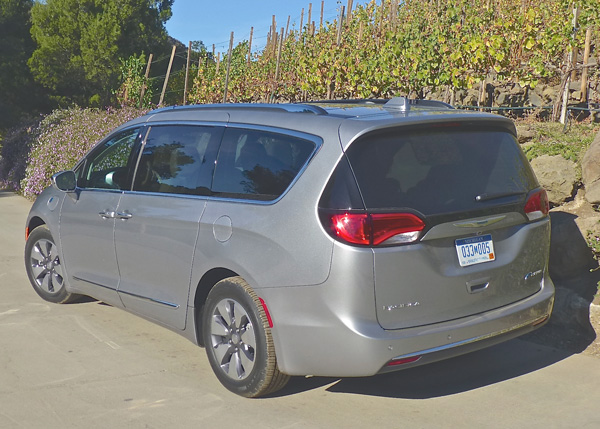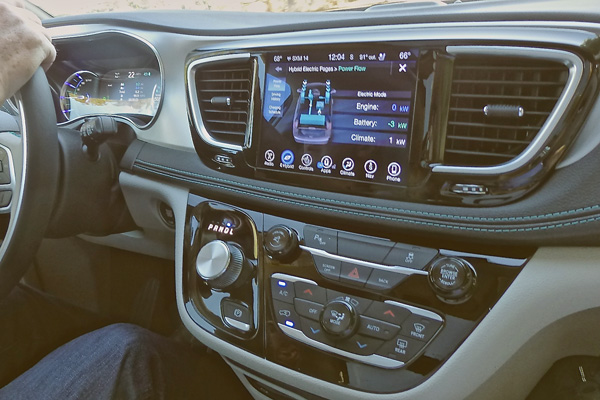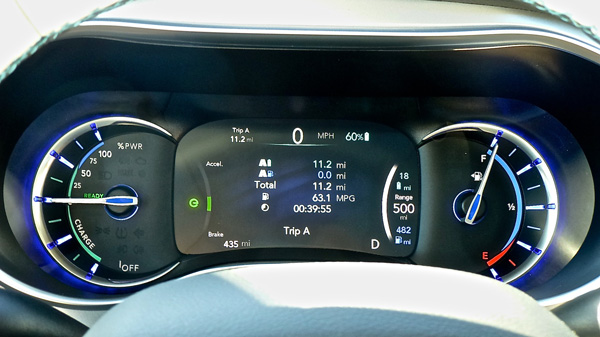News & Articles
Browse all content by date.

Car-buyers left the minivan segment for SUVs a decade ago, although enough folks stayed with minivans knowing they were the most efficient way to convey seven occupants for less expense. And the latest trends seem to indicate a fair number of buyers are now migrating back from three-row SUVs to minivans, which themselves have risen to a surprising level of luxury and efficiency.
When Chrysler introduced its new Pacifica last summer – a minivan so intensely renovated that Fiat-Chrysler decided the old names Caravan and Town & Country simply wouldn’t do – it reaffirmed the company’s superiority in a segment it already dominates with a 37-percent hold.
New looks, new refinement, new features, and the latest technology from top to bottom were impressive, but FCA was holding back. A potential knockout blow was still in reserve, and now it has been delivered – the surprising Pacifica Hybrid.
We seem to know that it’s inevitable we’ll all be driving electric-powered vehicles or hybrids in the not-too-distant future. And maybe now. Electric cars need to be plugged in to function, while the best hybrids can benefit by being plugged in, but also can run off regenerated power from an internal combustion engine.

Keeping all of the assets of the Pacifica on board, the company renovated its impressive 3.6-liter Pentastar V6 with new camshafts, new pistons, new valves and Atkinson-cycle injection geometry, then hooked it up with a pair of electric motors, operated off a 16 kilowatt hour battery pack from LG Life, a cutting-edge South Korean technology outfit that has recreated itself in various other plants around the world, including the Detroit area.
It stretched the imagination to realize that you can be piloting one of these moving living rooms in a swift and agile manner, with seven occupants on board, and getting your choice of 30 miles of dedicated electric silent running, the equivalent of 80 miles per gallon during hard usage, or a total range of 530 miles using both gas and electric before you need to refuel with gasoline.
Matt McAlear, Chrysler brand marketing manager, was discussing how his life has changed since working with the Pacifica Hybrid in the last year. He said he drives to work, using part of the 30 miles of electric-only range, then he plugs it in during the day, and then he drives home.
“I was driving past a gas station the other day,” McAlear said, “and I realized that I don’t go to gas stations any more.”

In fact, a concern is that Pacifica Hybrid owners might get so used to driving on electric power that their minivan might end up with some stale gasoline in the tank, so an alert notifies drivers when they might want to stomp on the Pacifica a little to use up the gas and replenish it with fresh stuff.
As a confirmed skeptic, I wondered if the Pacifica Hybrid was simply the latest version of a copycat job that hooked up its engine to an electric system. John Gibson, hybrid powertrain chief engineer for Chrysler, assured me that was not the case. He’s had various assignments before he wound up focusing on hybrid powertrains 10 years ago. “LG has a plant inb Holland, Michigan, and 10 years ago I was going there to work on prototypes of minivan and Ram truck hybrids,” Gibson said.
“There is no range anxiety with the Pacifica Hybrid,” Gibson added. “If you drive easy, you can go 30 miles of pure electric; if you drive hard, and you need extra power, the gas engine comes on to supplement the electric power. We’ve designed the powertrain to always be in the most efficient setting.
“I’ve been driving one, and I drove it the first four weeks without ever using the gas engine.”
Driving for maximum efficiency, letting off the gas or braking smoothly will gather regenerative power to replenish the battery pack, but plugging it in is the most effective way to fully charge up the system. When you get home, or to a facility that has a charging station, you can use Level 1, household plug-in, and charge it fully in 14 hours, or you can go to Level 2, using 240 volts, and charge it fully in 2 hours.
The Pacifica Hybrid comes in two levels, the Premium, at $41,995, or the Platinum, which includes Nappa leather and other upgrades for $44,495. Those prices exclude the $7,500 federal credit you can qualify for.

Among the features of the new Pacifica is a slick and luxurious interior, with a power switch now operating the unique stow n’ go feature that drops the second and third row of seats down into receptacles in the floor. In the hybrid, there has to be some loss of room to house the battery pack, which is of LG’s unique design of vertical plates for more efficient cooling. Designed and built in the Michigan plant, the battery pack fits into the second-row seat receptacle in the floor.
That means the third-row bench seat still disappears with a flip of the stow n’ go switch, but the second row seats have lost their receptacle. No problem, though, the second row buckets can still be popped out and stashed in the garage – the same mundane technique competitive van owners must follow.
All of the other Pacifica features are intact, including the vacuum cleaner built into the side pillar, with its 25-foot cord that might allow you to clean out a couple of adjacent vehicles as well.
Otherwise, the Pacifica redesign has the benefits of the increased use of high-strength steel, which now comprises 72 percent of the Pacifica, and the use of aluminum in the side doors and tailgate, to both improve torsional stiffness and reduce weight.

In case hauling seven occupants with all the various video screens in the second and third row of seats and getting 80 miles per gallon overall isn’t quite impressive enough, you also get active grille shutters, which both held cooling and reduce aerodynamic drag.
While driving the Pacifica Hybrid, we were impressed by its agility and handling capabilities. I’m wondering if part of its stable, planted feeling might be because the weight of the battery pack is all located low and in the middle of the vehicle. Independent rear suspension, replacing the torsion beams, also helps.
We drove up into the California mountain range east of Los Angeles, and I drove the first part, trying to drive gingerly and with an eye on the power gauges. I was able to get up to a composite 67 miles per gallon overall, which was impressive, considering we were driving upward most of the way. My partner then took over and when we got back down to the Pacific Coastline, the gauge read “99.9 mpg.”
That not only was mind-boggling, even if we were driving down the mountains most of the way, but we wondered if the gauge itself might not register triple digits – and 99.9 might be the maximum.

Regardless, if the 2017 Pacifica stands atop the competitive minivan battle with Honda, Toyota and Kia, the new Pacifica Hybrid takes fuel-efficient family motoring to a whole new plateau.
| Tweet |


